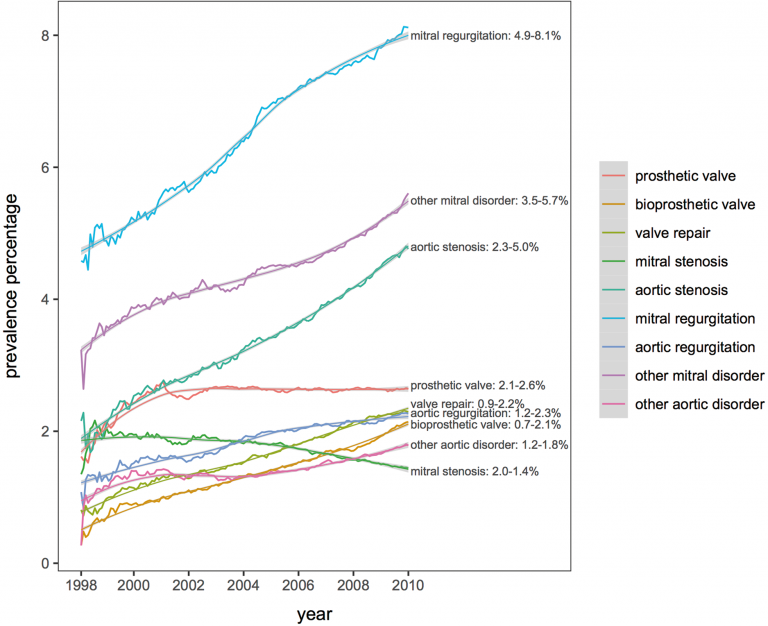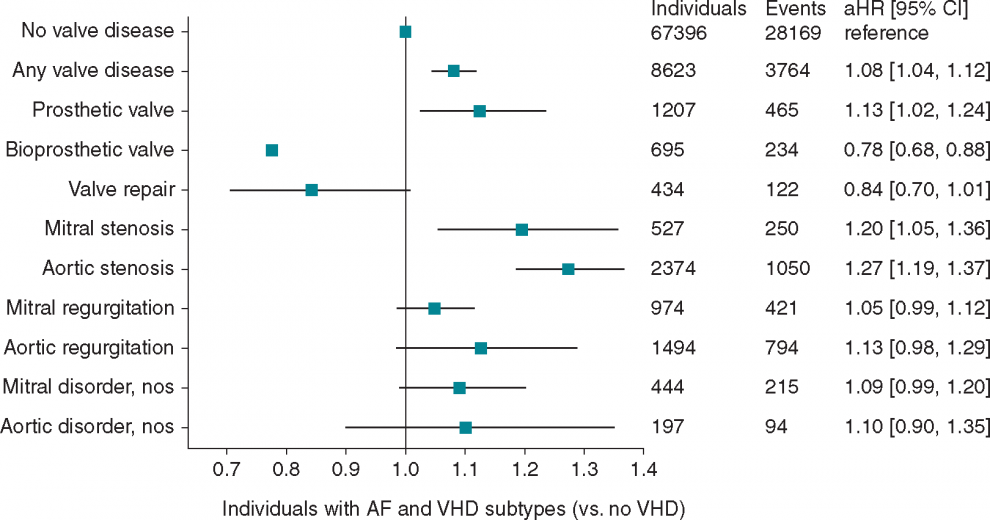New Publication: Subtypes of atrial fibrillation derived from electronic health records
21 August 2019
A group of researchers co-led by the UCL IHI's Amitava Banerjee and Victoria Allen evaluated population-based electronic health record definitions of atrial fibrillation and valvular heart disease subtypes.

Led by the UCL IHI's Dr Ami Banerjee and Victoria Allen (PhD student), a group of researchers including IHI's Professor Spiros Denaxas, (Deputy Director), Dr Anoop Shah and Professor Harry Hemingway (Director) used the CALIBER resource to evaluate subtypes of valvular heart disease (VHD).
A variety of definitions are used across practice, guidelines, observational studies and trials to describe atrial fibrillation (AF) and valvular heart disease (VHD) resulting in various uncertainties such as what the most effective treatments are. The group proposed that electronic health records (EHR) could address these uncertaintites with the greater sample size the resource allows providing greater generalizability than other study designs. They investigated the feasibility of using EHR to identify AF with VHD, temporal trends in prevalence of VHD subtypes with AF 1998–2010 (prior to routine direct oral anticoagulant (DOAC) use), and the prognosis for patients with VHD subtypes of AF.
The group used CALIBER data which connects mortality (Office of National Statistics, ONS), primary (Clinical Practice Research Datalink, CPRD), and secondary care (Hospital Episode Statistics) data and is representative of the UK population by age, sex, ethnicity, and mortality, providing valid risk estimates associated with cardiovascular diseases. They developed an algorithm for acquired VHD (excluding congenital) which combined 406 diagnosis, procedure, prescription, and valve replacement codes classifying the single most relevant VHD, in order of replacements, repairs, and stenosis/regurgitation.

AF and VHD subtypes and adjusted risk of incident stroke, systemic embolism, and all-cause mortality. Reference category: patients with AF and no record of valvular heart disease. Hazard ratios adjusted for age, sex, warfarin, heart failure, hypertension, diabetes mellitus, stroke, transient ischaemic attack or systemic embolism, and vascular disease. AF, atrial fibrillation; aHR (95% CI), adjusted hazard ratio (95% confidence interval); VHD, valvular heart disease; nos, not otherwise specified.
The researchers concluded that there is a high prevalence of VHD in AF patients (among the 76,019 individuals with AF, they identified 12,751 with VHD) and that the burden of VHD increased from 1998 to 2010 among individuals with AF (from 11.4% to 17.6%). Additionally, by comparing the identified subgroups with AF without VHD, the group concluded that VHD infered a greater predicted actual stroke/mortality risks. Despite the high prevelance and high risk of adverse events, the group found patients to be sub-optimally treated with oral anticoagulation.
The group report a transparent and reproducible EHR algorithm, providing new insights into VHD subtypes in AF with key implications for future research.
To read the full paper visit the EP Europace website.
Full citation: Amitava Banerjee, Victoria Allan, Spiros Denaxas, Anoop Shah, Dipak Kotecha, Pier D Lambiase, Joseph Jacob, Lars H Lund, Harry Hemingway, Subtypes of atrial fibrillation with concomitant valvular heart disease derived from electronic health records: phenotypes, population prevalence, trends and prognosis, EP Europace, , euz220, https://doi.org/10.1093/europace/euz220
 Close
Close

